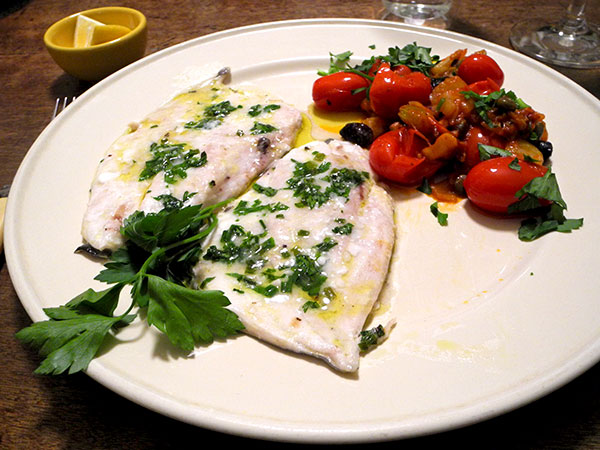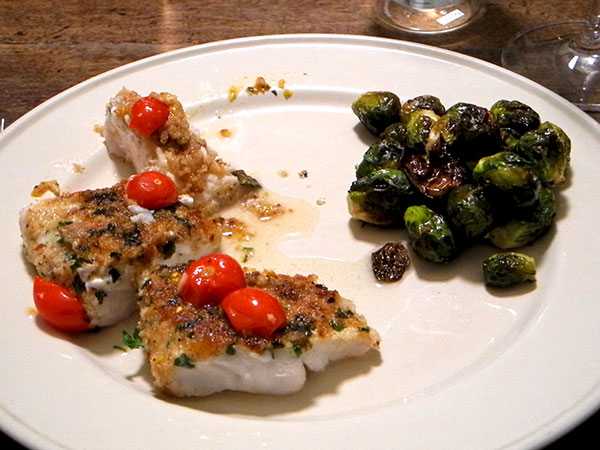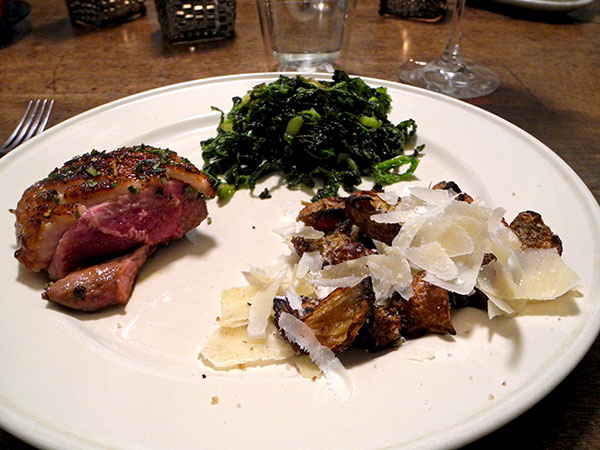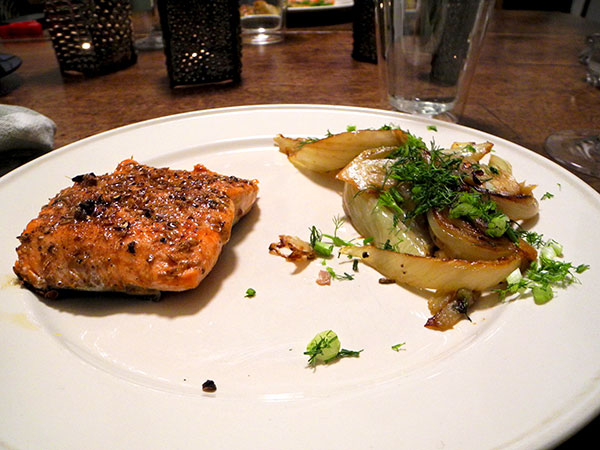They seem to almost always weigh the same, and that means about three ounces (at least when they come from Eastern Long Island), and every one is as beautiful as the other, with a silvery skin without scales, and fresh pinkish-white flesh. Handily, they are virtually without bones. What’s not to like? Because of their subtle flavor and delicate texture, fillets of John Dory (aka le Poisson de St.Pierre, Pesce San Pietro, Petersfisch, Heringskőnig, Zeus Faber, or the-funny-shiny-one with-the-sourpuss-face) are probably best served very simply. That is pretty much how I handled these, even if I indulged myself by using two herbs.
- John Dory fillets from Pura Vida Fisheries, arranged in a lightly-oiled baking dish, sprinkled with lemon juice, seasoned with salt, and pepper, brushed with a mixture of olive oil, chopped parsley from Manhattan Fruit Exchange and scissored chives from Whole Foods, baked in a 350º oven, skin-side down for 5 minutes, turned over, the other side brushed with the same mixture and the pan returned to the oven for another 10 minutes, served with parsley sprigs (this is the recipe, except that I substituted olive oil for the butter indicated, mostly out of respect for the very-Mediterranean vegetables that accompanied the fish)
- a compote of fennel from Norwich Meadows Farm, thyme from Manhattan Fruit Exchange, garlic from Migliorelli Farm, a small can of ‘Muti’ Baby Roma tomatoes, a melange of olives (from Whole Foods) and a small handful of capers, served with chopped parsley from Manhattan Fruit Exchange (the recipe is mostly the creation of Mark Bittman)
- the wine was an American white, Buried Cane Middleton Family Columbia Valley Chardonnay 2013




